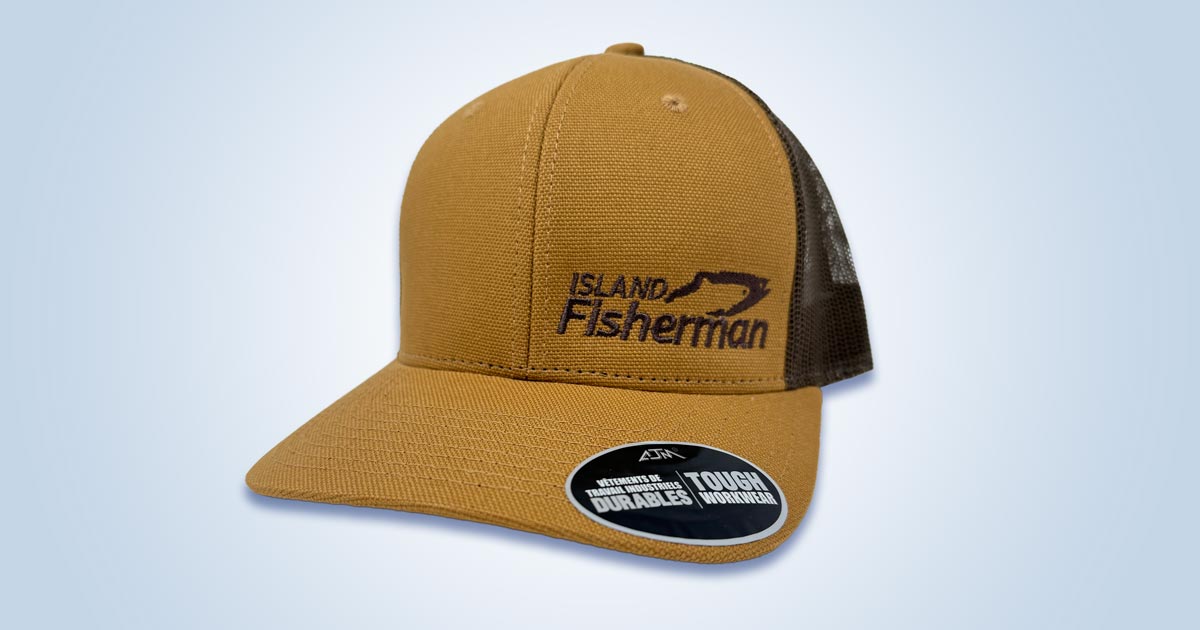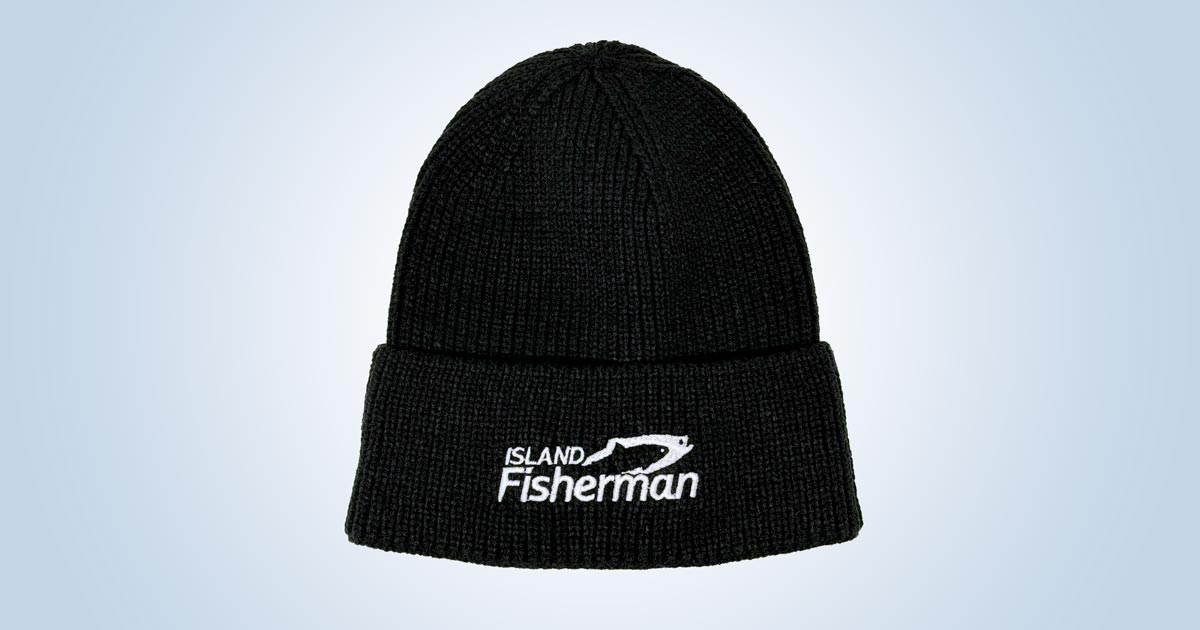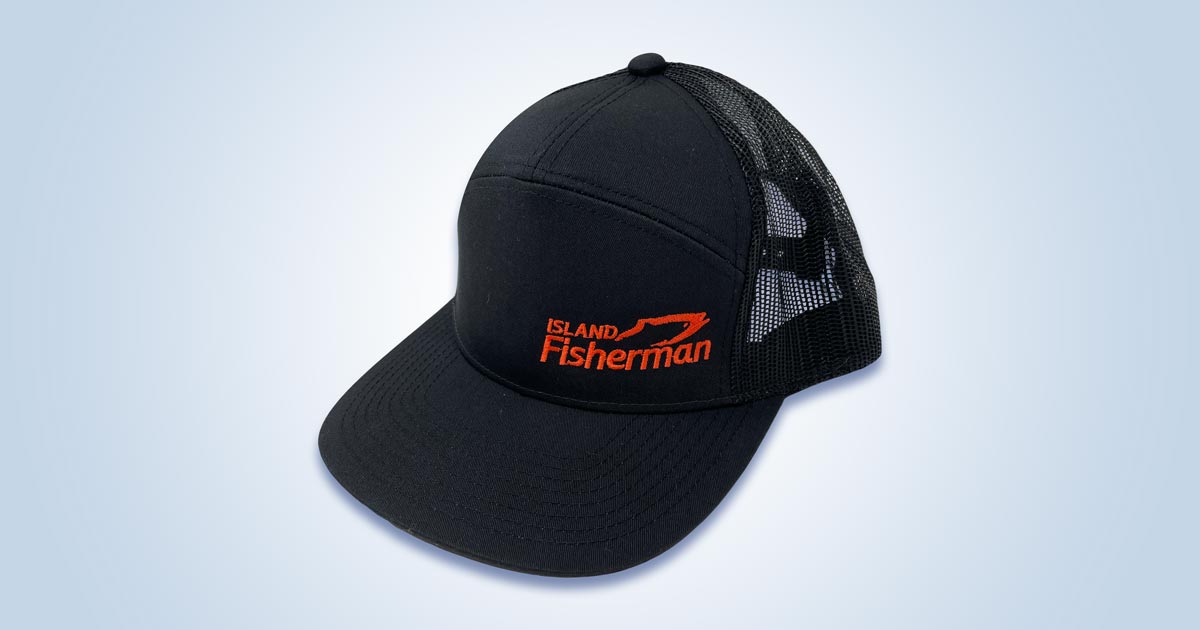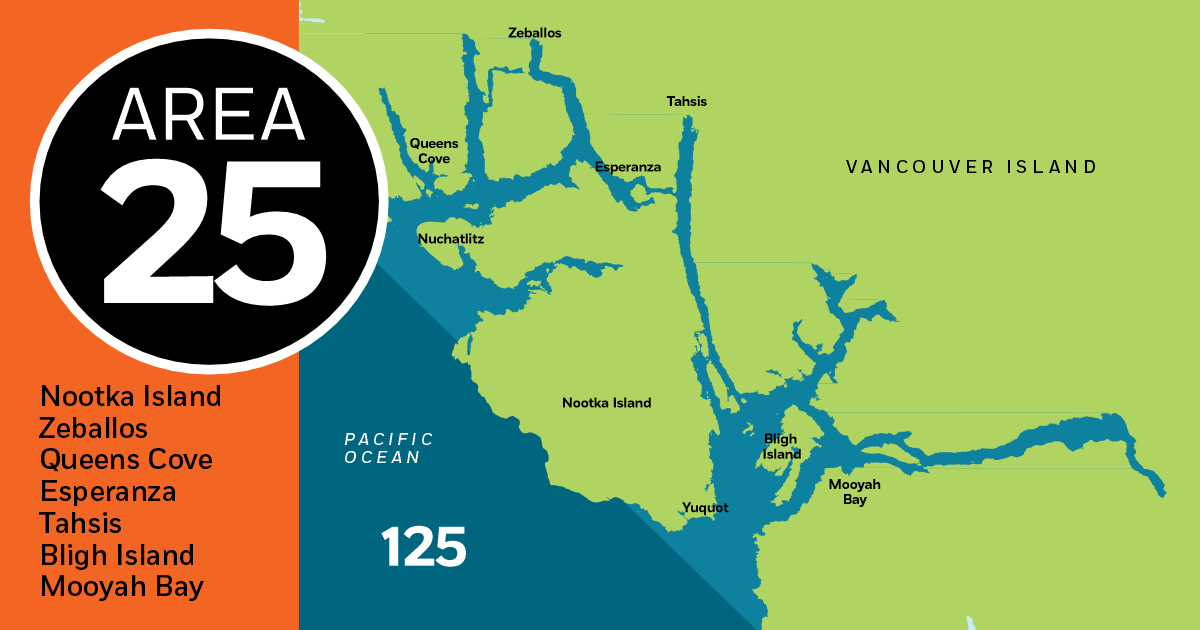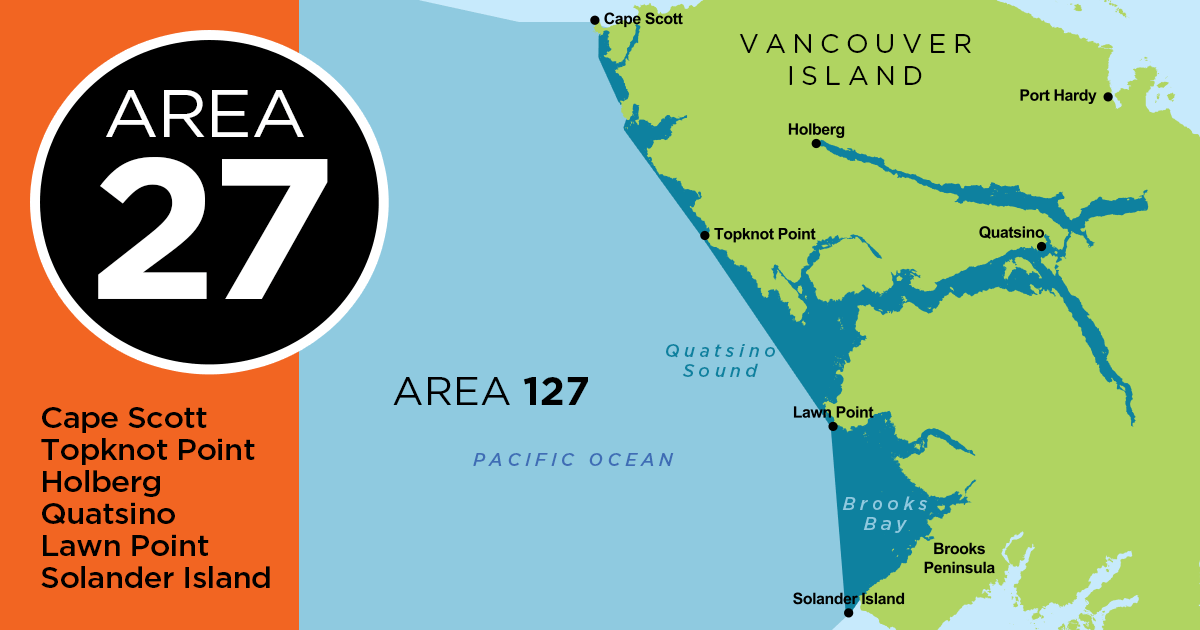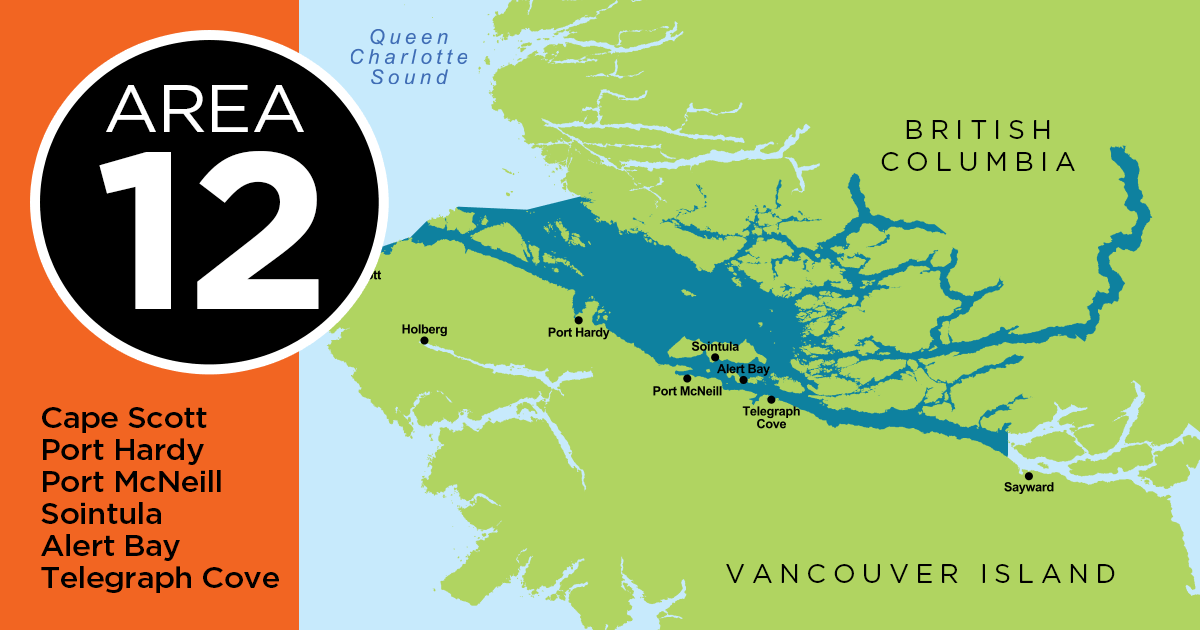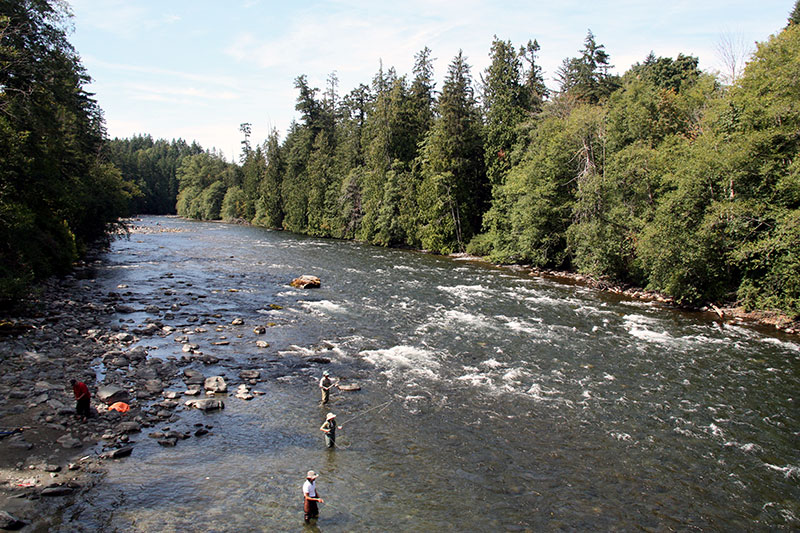
I slowed my truck at the approach to the Oyster River bridge and managed darting glances both up and downstream. Without a doubt my favorite steelhead river, despite the fact it did not necessarily produce the largest fish or the most. There was simply something about the ribbon of water that drew me back time and time again. Many of the outings offered little more than fresh air and exercise; to enjoy continued success usually invites an unhealthy case of head-swelling that is guaranteed to drive fishing cronies away in droves until it becomes known a fishless day or two has brought you back to your senses.
Most trips had been satisfying, however, often in ways other than simply number of fish hooked. Sometimes the reward came in safely wading a particularly rough stretch of water; or in making a precise cast into a difficult ran; or in striking a fish on the very first drift through a hole your buddy had quit in disgust only moments earlier. But for many of us who concentrated our excursions mainly on steelhead, the ultimate high came in watching our recently vanquished quarry firming back into the depths to continue the spawning run. Catch and release. And as we encountered others along our paths we encouraged them to do the same. Take my buddy Tom James for instance….
I idled away my time prowling various riverbanks, while Tom was involved with a part-time job, and did a little fishing trolling for salmon. It therefore came as a mild surprise when he approached me one day with a request to accompany me on the river. “I’d like to try it,” he explained, “just to see what the big attraction is.”
“Sure,” I replied, “I’m heading up to the Oyster on Saturday. You’re welcome to come along–but on one condition.”
“What’s that?”
“If I tell you to let a fish go I don’t want any arguments.”
Tom grinned. “From all I’ve heard about how hard they are to catch I figure I’ll be lucky to see you catch one, let alone me. Sure, you’re on.”
After discussing what he had for tackle I assured him that his six-and-a half-foot rod and trout-weight spinning reel would suffice–even with “only” eight pound-test line.
It was a dismal March day with the threat of rain hanging too low for comfort in the soggy grey clouds as we emerged from the trail to view the deep slow-moving water some three yards or so below us. We were dressed warmly, however, and I carried both of our thin nylon rain jackets in the voluminous rear compartment of my fishing vest–just in case.
I took Tom’s rod from him and checked the hook to ensure the knot was properly tied and spaced just ahead of the bend, and that the point was sharp enough to catch the surface of my thumbnail when scraped gently against it. I withdrew a chunk artificial roe and it was molded to the No. 4 hook and cinched into position by the loop of line formed between the knot and the eye.
“Normally we’d fish from the opposite bank,” I explained, “but you’d never get across with those hip waders. If you ever decide to take up steelheading seriously, concentrate on getting waders before you start looking for a heavier outfit. You can always make do with a light rod and reel, but the waders will get you in and out of places you couldn’t normally reach.
“The funny part about wearing the damned things is you seldom wade any deeper than you would with hip waders, but you don’t have to worry about going over the tops.”
A single BB shot was pinched to the line about 30 cm from the bait, enough weight to get it down in the slowly moving water, but not enough to anchor it. A final check of the drag made sure the spool was not cinched down too tightly before I handed the rod back and said, “Stand down there on that big flat rock and cast upstream about 40 feet, and about seven or eight feet from the bank. It’s deep on this side, about nine or ten feet, and the bottom is fairly clear.
“Watch the line instead of the rod tip. Concentrate on where it goes under the water and it will act just like a bobber. You’ll see it twitch when the bait hits bottom, and you’ll see it twitch when a fish hits it. They don’t hit like they do a lure, so you have to concentrate.
“Crank in your line just fast enough to keep most of the slack out of it, but not so fast that you drag the bait through the water. If you get a hit – and they come on the first drift as often as not–don’t strike. Just reel in the slack until you feel the line tighten, then sock the iron to it. It might only be bottom, but that is something I can’t decide for you, that comes with practice. In the meantime, we’ll plan on donating a bit of roe while you learn.
“Don’t wait too long to hit or the fish will swallow the hook. It’s not too bad if they are right down in the gut because you can cut the line if you have to let them go, but if you rip their gills they are as good as dead.”
Tom picked his way carefully down the boulder-strewn bank and stood on the flat rock I had suggested. The tip of the light rod pointed downstream for a moment, then swept in a wide arc to shoot the bait towards the target area. It flew off on a tangent, however, and landed gently on the water some five or six yards to his left.
“Not very much weight for casting,” my friend grumbled.
“Maybe not, but it’s just right for this type of a drift. Don’t worry, you’ll get the hang of it with practice.”
His next cast put the ball of bright orange roe almost right where I had indicated. The line continued moving downstream.
“Bang on! Fish it in,” I coached. The reel bail clicked shut and began slowly revolving around the spool. As predicted the slowly sinking bait finally encountered the bottom, as was indicated by a twitch of the line where it disappeared beneath the surface. Bob’s arm jerked back violently as though an electric shock had zipped up through the rod.
The line twitched again, and Tom’s arm twitched an instant reply, but he fought down the urge to strike. The line continued moving downstream towards the intent angler then stopped and began to tighten imperceptibly. “Hit it!” I screeched.
The rod whipped back into a straining bow as my calm order was complied with. Suddenly the flat grey expanse of water was punctured as a foot or so of silver shot into the air like a submarinelaunched missile. The fish smacked noisily back onto the surface only to trampoline right back into the air. In an attempt to keep the line taut Tom tried to backpeddle with the rod held high over his head, forgetting in the panic that his granite perch loomed half a yard or higher than the surrounding landscape. His drawn- out whoop escalated in pitch as he plummeted over backwards, shifting to a howl of pain as his backside collided with a variety of unyielding rocks. Throughout the melee the fish remained firmly hooked, and as my fallen companion regained his feet to the accompaniment of several expressive words, I was treated to a grandstand display of angler versus fish on light tackle; in spite of his inexperience with steelhead Tom knew how to handle his equipment.
Finally the great fish was laying on her side at his feet. “Help me land it!” my budding steelheader beseeched in a voice fully one octave higher than my earlier effort at getting the hook set.
I quickly scrambled down the bank and reached out towards him. “Here,” I said. Tom tore his gaze away from the fish and his eyes widened in disbelief as they focused on the long-nosed pliers being waved nearly under his nose. “What the?…”
“Let her go,” I said quietly.
He looked down at the huge fish, then wildly back at the pliers. His mouth tightened into a thin line and his shoulders sagged. Slowly he reached for the pliers. The few moments thus spent had rested the fish enough that she had regained her equilibrium, and she now lay firming beside the very rock Tom had used as a casting platform. She did not move, however, until the grim-faced angler had knelt on the rock, paused for but a moment, then reached carefully down to twist the hook from the side of her jaw. Sensing freedom her great tail sculled back and forth slowly and propelled her out towards the center of the flow. Here she turned and took up position in a yard or so of water, hopefully none the worse for wear from her short encounter.
I was waiting somewhat nervously at the top of the bank when Tom, face dark and foreboding as a thunder cloud, made his way slowly up from the water’s edge to stand before me. He glowered at me with a look that could have welded metal, then said in a strained voice, “I just turned loose the biggest damned salmon I’ve ever seen in my life–and I want you to tell me why.”
“It was a kelt.”
“What’s a kelp?”
“Kelt – with a tee. Spawned out.”
“So what?”
“So she would have tasted like a dirty wool sock dipped in rancid sheep fat when you tried to eat her. They burn up their body fat while they are spawning, makes their meat soft and flabby. Really! Honest! Promise you won’t beat me! Besides, after letting a fish that size go everything else will be easy.”
As we walked downstream to the next fishable stretch Tom, now calmed and feeling pretty chipper about the whole affair, asked how large I guesstimated the fish to be.
“About 40 inches or more. That would probably put her in the 20 pound-plus range when she was in her prime. As it was she would still have gone about 15 or 16. If she can stoke up on enough food to get her back to the chuck, and then get through another cycle, she could well be in the high twenties if she spawns again.”
The next stretch drew a blank, but Tom’s keeper was not too long in coming, perhaps a half-hour or so. She was a pretty little hen fish that put up a spirited battle before being skidded out onto the gravel bar. At about eight pounds she was more the norm for the Oyster than the behemoth taken earlier. It did not take much of an eye for detail to see she was fatter, fitter and more brightly colored than the kelt.
Feeling my ministrations as teacher deserved some reward, I fished the next run ahead of Tom and quickly found myself engaged with a chunky, hook-jawed male fish that would have stretched the scale indicator well into the twelve pound range. A wide slash of brilliant crimson partially cloaked his silver flanks, and the lower gill covers were a mosaic of velvet black and snow white. The white of his belly had flecked with small, irregular patches of light grey, but no milt ran from his vent. Probably only a day or two from the saltwater, in spite of the coloration he was not yet ready to spawn.
I flicked the hook from his jaw and steered him into the edge of the current with a gentle grip around the thick wrist of his tail. The strong, toothy jaws snapped open and shut twice, then began pulsing in time with the slowly flaring gill covers. Moments later he surged free of my supporting hand with a flip of his wide tail.
“Now that wasn’t a kelt was it?” Tom asked.
“Nope. Nice buck though. You know, if you watch trout or salmon on their spawning redds you quite often see two, sometimes three, small males servicing one big female. I guess that’s why a lot of us feel it’s more important to let the males go than the females – it seems to take more of them to get the job done. Besides, I always hope by letting a big buck like that loose to spawn that his genes will be passed on to produce even more big fish.”
“Mmm,” Tom mused, “Kind of like selective breeding mixed in with conservation eh?”![]()
Visit the Store
$34.99
$34.99
Featured Catch
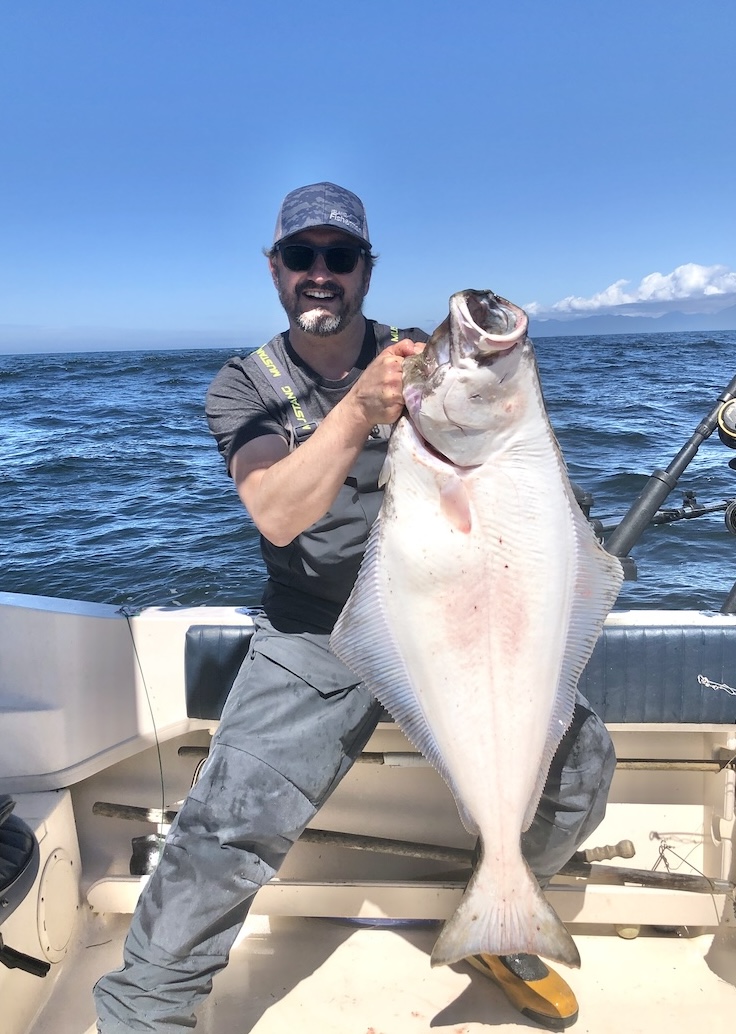
Joel Unickow halibut (Photo: Rob Frawley Lucky Strike Sportfishing Tofino)

